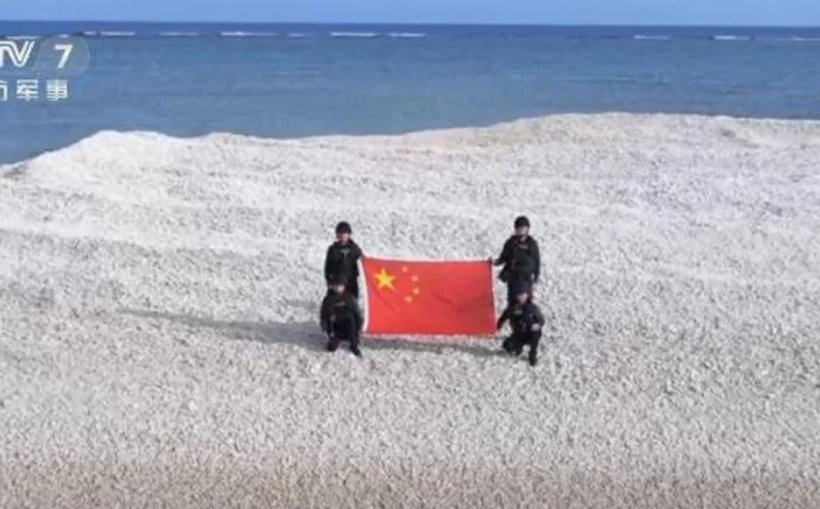China’s coastguard has seized control of Sandy Cay, a small sandbank in the contested Spratly Islands, escalating tensions in the ongoing South China Sea dispute with the Philippines, state media reported.
State broadcaster CCTV aired images showing four Chinese coastguard officers, clad in black uniforms, planting the Chinese flag on Sandy Cay earlier this month. The move, described as “implementing maritime control and exercising sovereign jurisdiction,” signals a new flashpoint in the increasingly tense standoff between Beijing and Manila.
The Philippine government has yet to issue a formal response. Sandy Cay, a 200-square-metre sandbank, lies near Thitu Island, a key Philippine military outpost used to monitor Chinese activities in the region. While Chinese forces reportedly departed after the operation, the symbolic act has drawn international concern.
The White House called the reports “deeply concerning if true,” with US National Security Council spokesperson James Hewitt warning that “actions like these threaten regional stability and violate international law.” Washington has said it is consulting closely with its partners in response.
The development comes as US and Philippine forces conduct their annual joint military drills, known as Balikatan, involving around 17,000 personnel. The exercises include the deployment of advanced missile systems, such as the US Marine Air Defense Integrated System and the NMESIS anti-ship missile platform. Although Manila insists the drills are not aimed at any specific nation, Beijing has criticized them as provocative.
“This type of training is absolutely invaluable to us,” said US Marine Corps officer John Lehane, emphasizing the drills’ role in bolstering national defense readiness.
US Defence Secretary Pete Hegseth, during a recent visit to Manila, reaffirmed Washington’s commitment to its Philippine alliance, pledging to “double down” on efforts to deter Chinese assertiveness in the region.
Disputes over the South China Sea have simmered for centuries but have intensified in recent years. China claims nearly the entire sea through its expansive “nine-dash line,” a demarcation rejected by international courts but enforced through island-building and regular naval patrols. Vietnam, Taiwan, Malaysia, Brunei, and the Philippines all contest parts of the area.
The latest move at Sandy Cay underlines the fragile situation in the South China Sea, where competing territorial claims continue to raise the risk of broader confrontation.


